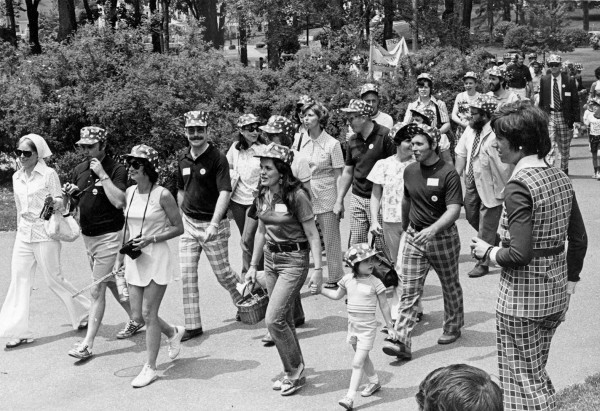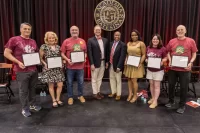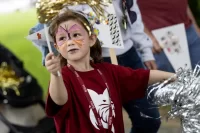
The Alumni Parade, our tradition of ‘universal enthusiasm and great merriment,’ turns 100 years young
By 1914, Bates was hitting its stride as a college. And having sent college graduates into the world for nearly 50 years, it was time for some grown-up alumni programming.
Which meant getting a little silly.
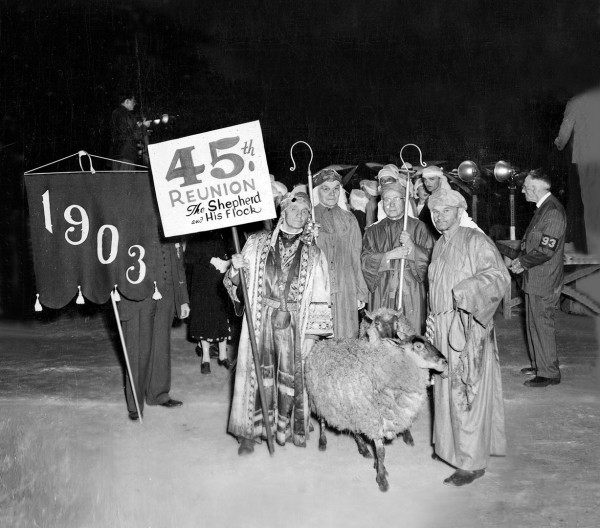
In 1948, this “display of livestock” won best costume for the Class of 1903. The sign holder, Class President Alexander Maerz, is next to classmates George Ramsdell, a longtime Bates math professor, and Carl Sawyer. Ralph Johnson, right, wrangled the sheep for the class. Photograph courtesy of the Edmund S. Muskie Archives and Special Collections Library
1914 was a big year, marking the 50th anniversary of the college’s transition from Maine State Seminary to Bates College in 1864. The college chose to celebrate the semicentennial during Commencement, in June.
The Bates Student, doing double duty in those days as both a campus and alumni publication, noted in May that “this Commencement of all Commencements should belong to the alumni.”
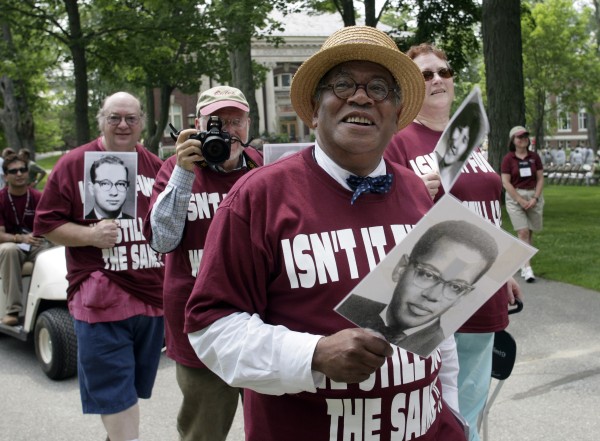
The late Rev. Peter Gomes ’65 sports a t-shirt that reads, “Isn’t it funny… We still look the same,” in honor of his class’s 40th Reunion in 2005. Photograph by Phyllis Graber Jensen/Bates College.
The big new feature of this alumni-focused Commencement was an Alumni Day, “a program of merrymaking by the different classes…such as is carried on at many of our larger colleges.”
And the centerpiece of Alumni Day was an Alumni Parade, a “historico-humorous parade of classes about the field.”
In its buildup to the event, The Student exhorted the classes to portray “historical incidents associated with the development of Bates, illustrated soberly or unsoberly; ‘things you did,’ wise or other-wise…. Class statistics, mention of members who have won honored places…may well be carried on large cards or any other way. Class banners of olden days…should be there.”
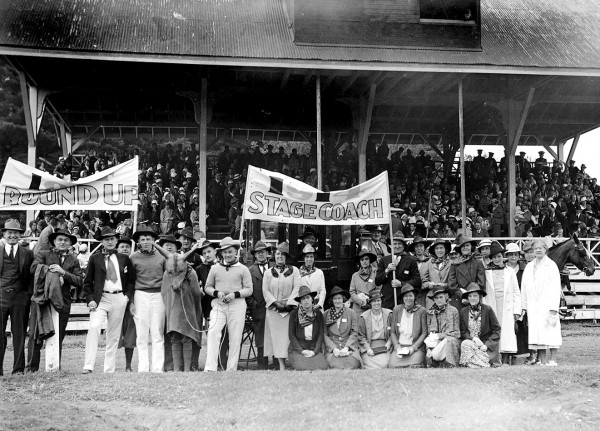
In 1934, it was time for the 20th Reunion Class of 1914 to cowboy up for the Alumni Parade. Photograph courtesy of the Muskie Archives and Special Collections LIbrary.
One hundred years later, the Alumni Parade hasn’t deviated from the 1914 playbook. Stop by the Alumni Walk on June 7 and you’ll see.
Back in 1914, lest a parade seem like a frivolous way to celebrate the college’s 50th, there were sober events, too.
A pageant on the steps of Coram Library commemorated great college events: founder Oren Cheney reading about the burning of Parsonsfield Seminary, the incident that inspired Cheney to found his own school for poor and disadvantaged Maine youth; and the seminary students marching off to the Civil War, 175 of them, including two from Georgia who fought for the Confederacy.
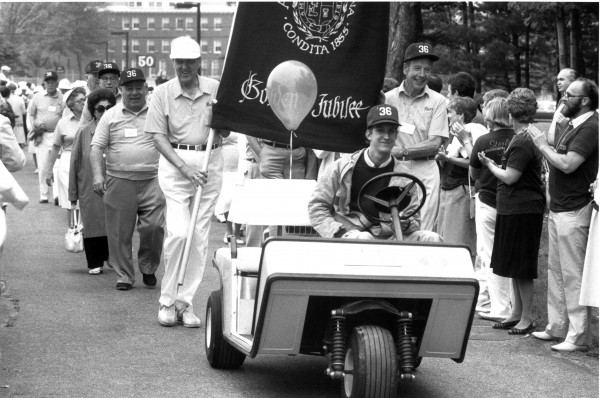
Maine Sen. Edmund S. Muskie ’36, left, architect of the landmark Clean Water Act of 1977, carries a banner featuring the Bates seal at his 50th reunion in 1986. Photograph courtesy of the Edmund S. Muskie Archives and Special Collections Library
Stepping up to the parade challenge was the Class of 1912. The Student of May 21 noted that class members would dress in all white and assemble “a band composed of the men of 1912 who played in the college band.”
The June 11 edition noted that the Class of 1904 “will be on hand with something good,” yet the class refused to divulge exactly what that might be. Using a trendy phrase from the early 1900s, the class wanted to conceal their plans until the “psychological moment.”
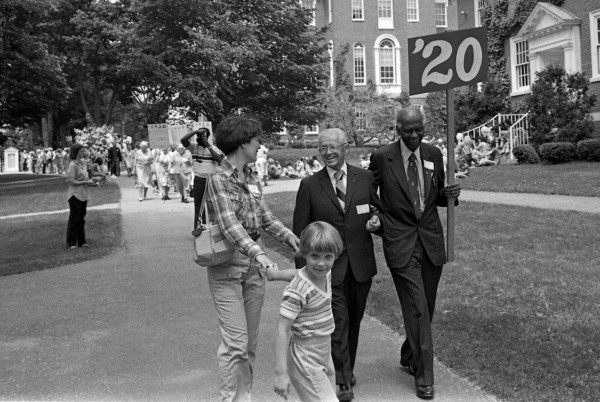
Benjamin Elijah Mays ’20, civil rights leader and mentor to Dr. Martin Luther King Jr., links arms with with a classmate at their 60th Reunion in 1980. Photograph courtesy of the Edmund S. Muskie Archives and Special Collections Library
While coverage of the first Alumni Day is scant, the Bates Bulletin reports a successful event, as “the costumes, movements and performances awakened universal enthusiasm and great merriment.”
In contemporary parlance, the first parade fostered greater alumni engagement, and the good feelings carried over to Commencement the next day. In full spring bloom, the campus was, at least to Bates eyes, “the most charming place in all the world.”
